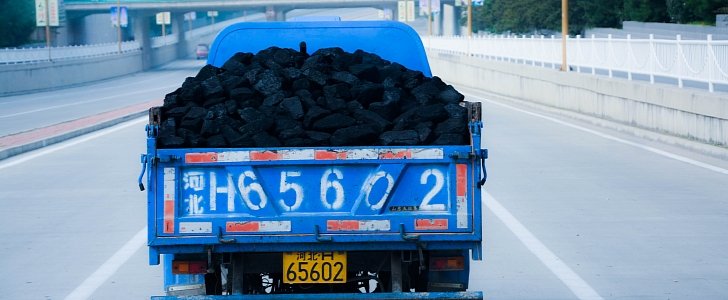Things escalated quickly for China’s pollution problems and it’s all down to two important factors: the exponential growth of the urban population and the country’s reliance on fossil fuels for generating electricity.
Sure, the cars and the construction sites of China’s largest cities are also to blame for the unbreathable air, but if we’re talking “market share,” then the coal-burning power plants are the main culprit. After years of applying laughable measures such as confiscating grills (yes, you read that right) that were being used in the streets, the government finally seems set on tackling the root of the problem.
Unlike the country’s development, though, this process will be much slower. For now, the communist regime has announced that it will suspend the opening of any new coal mines for the duration of the next three years, starting with 2016. The move is joined by a 1.8 percent drop in the usage of coal for energy consumption from the current 64.4 percent to a scheduled 62.6 percent. It’s very little, but at least, it’s heading in the right direction.
Bloomberg also reports that China has pledged to close down over 1,000 coal mines in 2016, after just as many were shut down during this year. However, the quantity of coal extracted in 2015 is expected to drop by just 0.5 percent compared to 2014.
The long-term plan is for the country to reach the peak of its carbon emissions by 2030, on the premises that by then it will be sourcing 20 percent of its energy needs from renewable or clean sources.
The same report states that China aims to add 20 gigawatts worth of new wind turbines and 15 gigawatts obtained from new photovoltaic fields during the course of next year. Ironically enough, that solidifies China’s position as the world’s largest investor in clean energy. By the end of this year, the country’s clean energy generating capacity is expected to reach 120 gigawatts of wind power, 43 gigawatts of solar power, and 320 gigawatts of hydropower.
It makes sense that the country facing the most serious pollution-related problems is also the largest investor in clean energy, but the truth is they have to pick up the pace if these measures are to make any immediate difference for the population. But at least the authorities are sending a clear message - that they realize there’s a real problem and are looking for ways of dealing with it.
Unlike the country’s development, though, this process will be much slower. For now, the communist regime has announced that it will suspend the opening of any new coal mines for the duration of the next three years, starting with 2016. The move is joined by a 1.8 percent drop in the usage of coal for energy consumption from the current 64.4 percent to a scheduled 62.6 percent. It’s very little, but at least, it’s heading in the right direction.
Bloomberg also reports that China has pledged to close down over 1,000 coal mines in 2016, after just as many were shut down during this year. However, the quantity of coal extracted in 2015 is expected to drop by just 0.5 percent compared to 2014.
The long-term plan is for the country to reach the peak of its carbon emissions by 2030, on the premises that by then it will be sourcing 20 percent of its energy needs from renewable or clean sources.
The same report states that China aims to add 20 gigawatts worth of new wind turbines and 15 gigawatts obtained from new photovoltaic fields during the course of next year. Ironically enough, that solidifies China’s position as the world’s largest investor in clean energy. By the end of this year, the country’s clean energy generating capacity is expected to reach 120 gigawatts of wind power, 43 gigawatts of solar power, and 320 gigawatts of hydropower.
It makes sense that the country facing the most serious pollution-related problems is also the largest investor in clean energy, but the truth is they have to pick up the pace if these measures are to make any immediate difference for the population. But at least the authorities are sending a clear message - that they realize there’s a real problem and are looking for ways of dealing with it.

